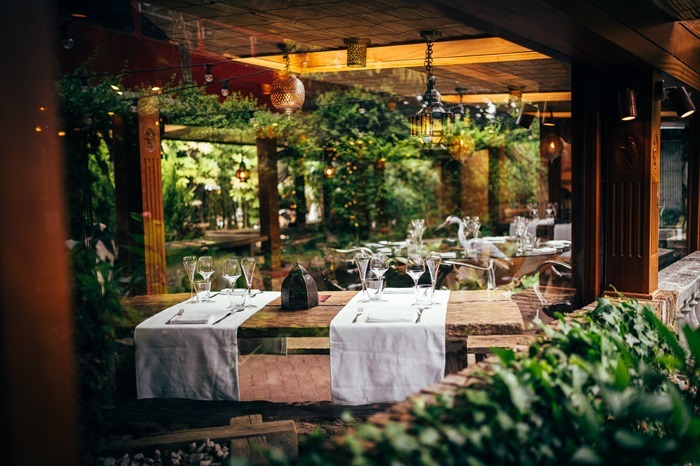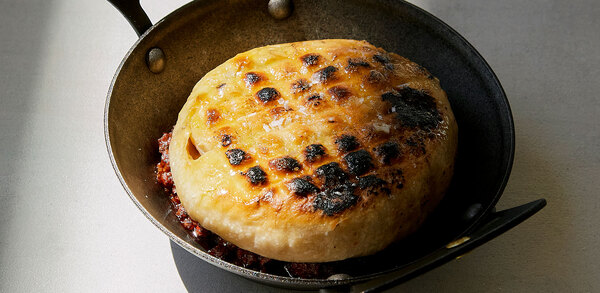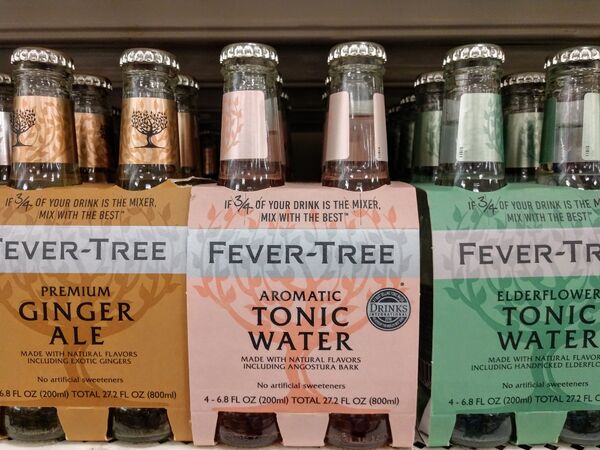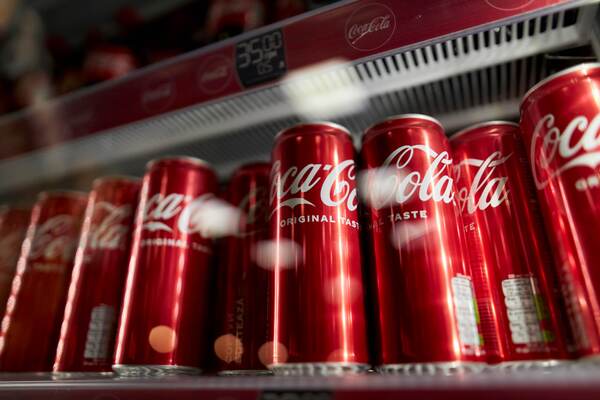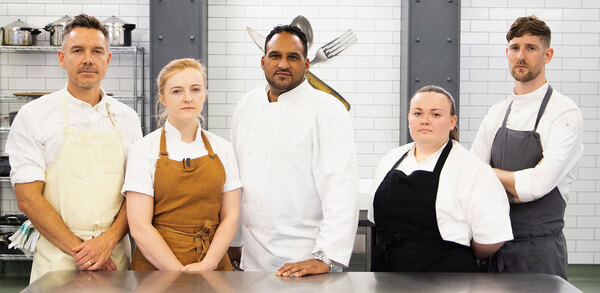Food waste: best ways to reduce and dispose efficiently
Food waste is not only a huge problem for the environment, but also for operators’ bottom line, so it makes sense to reduce it and then dispose of it as efficiently as possible. Angela Frewin selects the best ways to take out the trash
If food waste was a country, it would be the third-largest emitter of greenhouse gases after China and the US. This is the United Nation Food and Agriculture Organization’s stark assessment of a world where one-third (1.3 billion tonnes) of all food is thrown away each year, while 11% of people go hungry each day.
UK hospitality and foodservice companies dispose of one million tonnes of food worth £2.9b a year – yet 75% of this is avoidable, says charity WRAP (the Waste and Resources Action Programme). It estimates that the average cost of avoidable food waste is £0.97 per cover in restaurants, £0.52 in hotels and £0.14 in quick-service restaurants, which – assuming 1,000 covers per week – tots up to £50,440, £27,040 and £7,280 respectively a year.
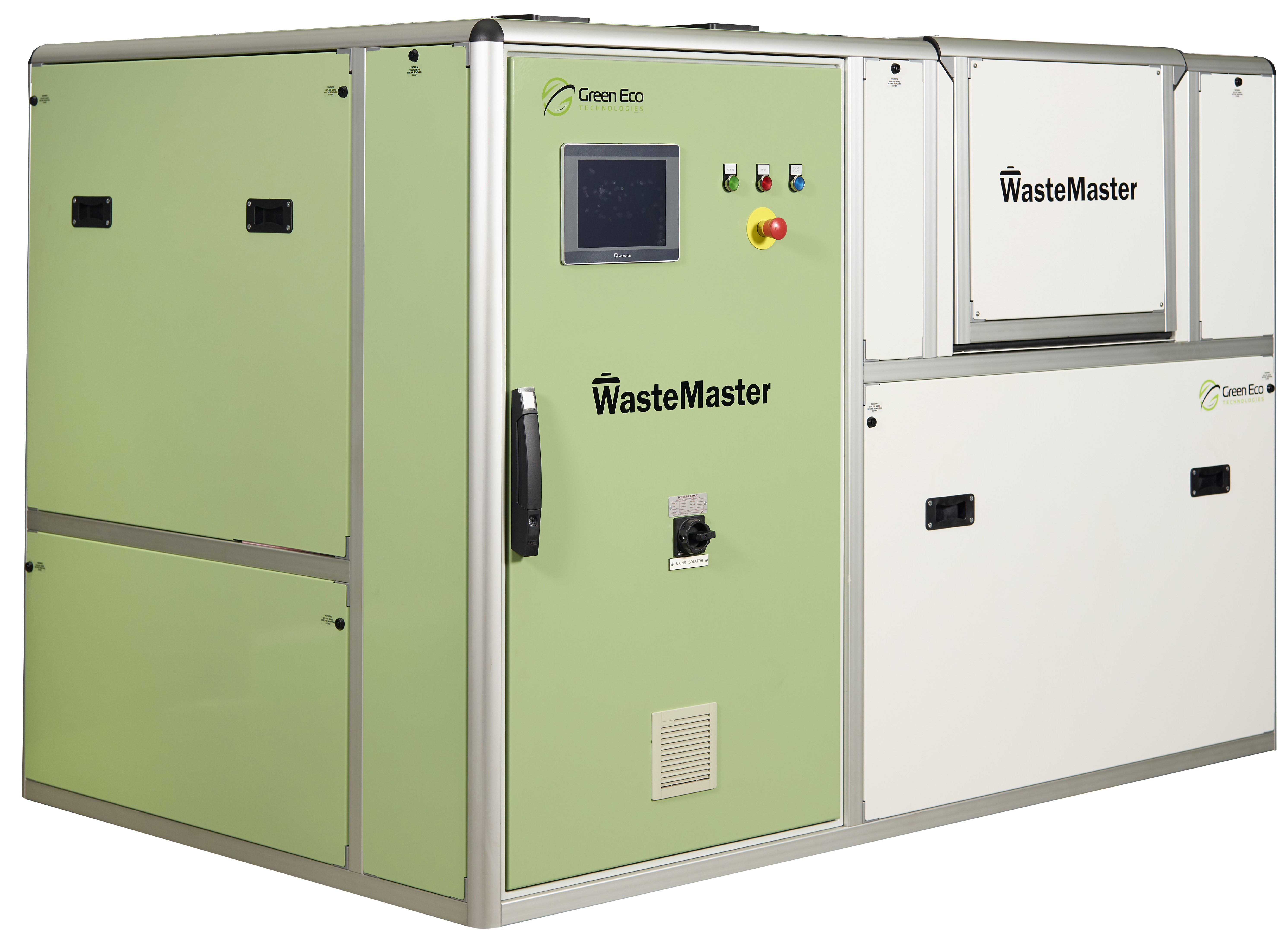
While current food waste reduction initiatives are voluntary, imminent legislation is anticipated. Fortunately, there’s plenty of equipment and resources to help caterers reduce their food waste, the associated costs and their carbon footprint – and make a profit converting it into green energy, bio-diesel or compost.
Cold comfort
WRAP’s research into the sources of food waste – spoilage (21%), food prep (45%) and customer plates (34%) – points to prevention as the first line of attack.
“Best practice in refrigeration can play a big role in reducing food waste, which in turn will save costs,” says John Whitehouse, chair of the Catering Equipment Suppliers Association (CESA). This means choosing models with the right Climate Class for their environment, as well as smart organisation, such as date-labelling food to operate a ‘first in, first out’ stocking system.
Another approach is to zap the microbes and moulds that target perishable foods – Mechline’s new HyGenikx wall-mounted air-and surface hygiene amplifiers can prolong the life of fresh produce in a cold store by an average of 58% (150% in some cases), boosting shelf life by over a week. Over-ordering to meet minimum order requirements is another cause of spoilage.
Facilities management firm Bennett Hay achieves its desired volumes by working with suppliers that buy directly from the farmers’ gate, also offering on-the-day menus to mop up kitchen supplies before ordering anew.
Tenzo claims its automated, highly-detailed AI sales forecasts are 50% more accurate than traditional methods at preventing overstocking.
Trash talk
Food waste has to be measured, and new technologies such as Winnow’s innovative Vision – an AI-powered bin with digital camera, smart scales and touchscreen – records the type, weight, cost and reason for all binned foods. Alistair Day, executive chef at Bennett Hay, says Vision has cut its clients’ food waste costs by between 2% and 8%.
A nose-to-tail or root-to-shoot approach (what WRAP calls ‘Compleatability’) remains the gold standard, but requires skilled staff to create imaginative dishes or specials menus from leftovers or unusual cuts of meat.
Beyond using scraps in stocks or winterwarmer casseroles, Tenzo head of marketing Dara Javan finds Google a surprising source of inspiration: “There are ingenious ways to use many ingredients that you would never dream of: did you know you can make chutney, vegan pulled pork or even bacon out of banana peel? Apparently you can!”
London-based contract caterer Fooditude sent groups of staff and clients to cook meals for local charities from surplus food at three of charity Foodcycle’s Food Invention Challenges.
“Our chefs have come back inspired by creative ideas that we intend to translate into some of our daily changing menus,” says director of food Matt Byne.
Plate waste can be addressed by reducing portion sizes (or offering the choice of smaller portions) while promoting doggy bags can reduce plate waste by 42%, as Scotland’s Good to Go campaign revealed.
The daily grind
There are many types of equipment available to keep remaining food waste from landfill. They include simple bag and filter-based passive traps favoured by smaller premises, foodgrinding waste disposers, dewaterers, vacuum and pump systems, and biodigesters and composters using food-digesting microbes.
However, systems flushing liquefied waste into drains are banned in Scotland and Northern Ireland, warns Martin Venus, head of UK and Ireland sales at IMC.
It’s preferable to recycle the calorific value of waste food by converting it into bio-fuels or compost, argues Meiko managing director Paul Anderson. Meiko’s WasteStar CC – which is the size of an undercounter glasswasher – macerates tricky food waste such as oils, fats and bones into a liquid slurry that is pumped away into a holding tank for collection.
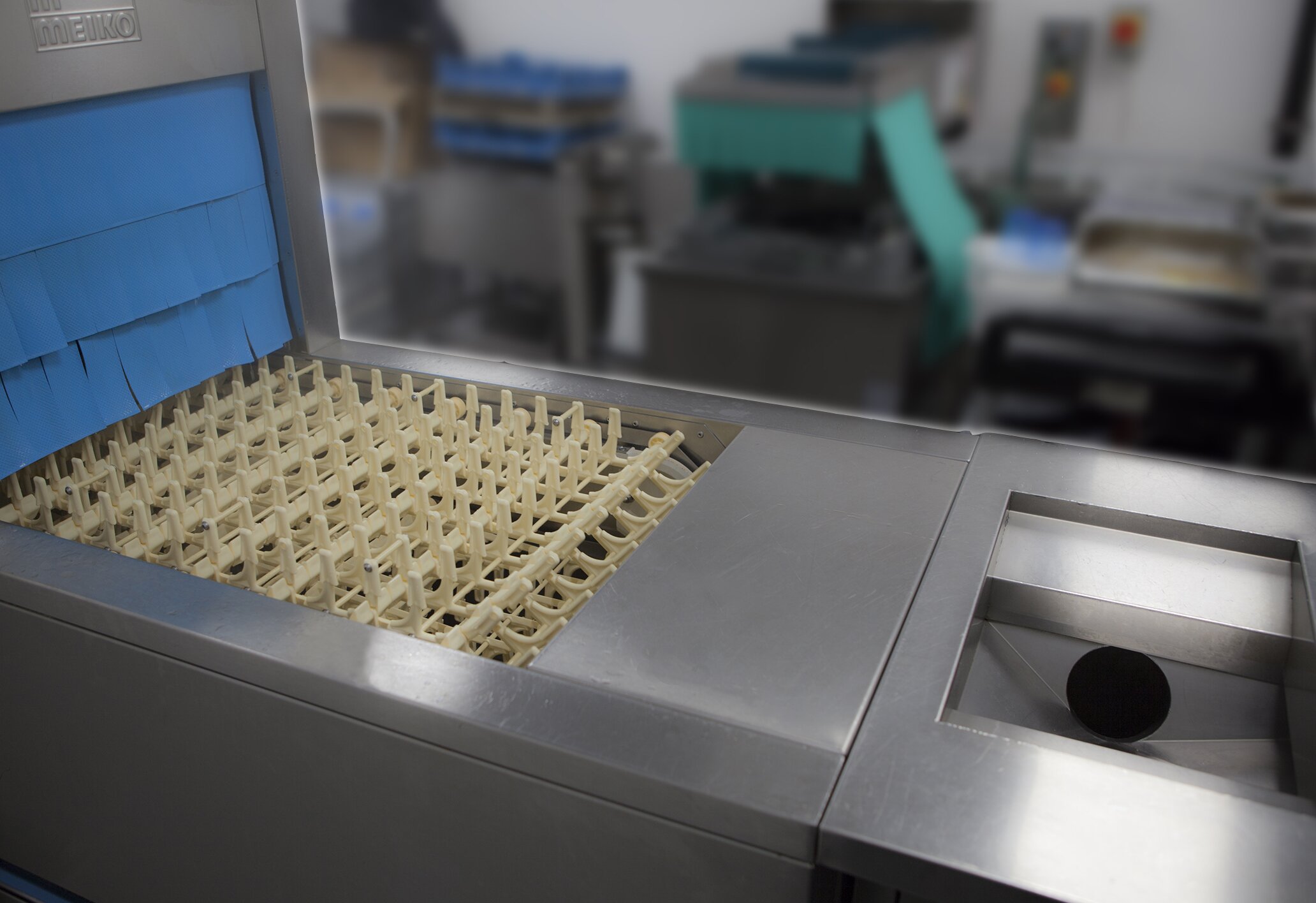
“Pumped or vacuum food waste handling systems are among the costlier solutions, but they will give payback for decades,” says Anderson. Benefits include robust long life and lower running costs than other systems.
IMC’s WasteStation slashes food waste volume by up to 80%, thus reducing collection costs. It sends finely ground food particles to the in-built dewatering system (or to a remote unit up to 55 metres away in the CR model), which expels excess liquid as grey water to the drain.
The remaining solids are stored in small, lidded bins for pick-up. Its in-vessel composters reduce waste volumes by up to 90%, converting one tonne of wet kitchen food (including raw and cooked meat and fish) into 20kg-50kg of compost.
Macerated, dewatered waste is mixed with compressed sawdust pellets and oxygen and heat enables naturally occurring bacteria to decompose the food.
Green Eco Technologies’ compact Waste- Master – winner of the Best Recycling Product or Solution category at November’s Big Green Awards – cuts food waste volumes by 80% within 24 hours, leaving a dry, odourless, high-calorific-value residue that can be anaerobically digested into bio-fuel. Supplied as a remotely monitored managed additives – just a three-phase power supply and air outlet.
And Enterpack’s new Compostapack Food Waste Composting System creates nutrient- rich compost on-site in just 24 hours from food scraps, meat and fish waste and soft bones, as well as cardboard and compostable food packaging trays and lidding films (such as Enterpack’s cellulose-based Compostapack range).
It uses heat, bacteria, mechanical mixing, ventilation and a deodoriser to eliminate harmful pathogens in compliance with EU Regulation No 142/2011.
“Waste not, want not” seems to be key when it comes to tackling food waste (which represents 40% of all commercial catering waste). And the World Resources Institute found that hotels, restaurants and caterers saved around £7 for every £1 invested into reducing food loss and waste. CESA has published a food waste guide, covering legislation, equipment, installation, case studies, and tips on adjusting menus, portion control and production methods. Go to www.cesa.org.uk/media/purnmwar/cesa-guide-to-reducing-food-waste.pdf
Fog hazard
The fat, oil and grease (FOG) from cleaning cooking equipment and dishes is perhaps the stickiest proposition in food waste management. Poorly managed FOG causes 70% of drain blockages and back-ups in commercial kitchens and 75% of sewer blockages, which can incur stiff penalties from the water companies. “As well as fines, you could face charges for cleaning and repairs to sewer networks,” warns Lee Shelton, head of sales at the Filta Group. Yet there’s money to be made from recycling waste oil into biofuels and renewable energy, adds Steve Morris, sales director at Jestic Foodservice Equipment – and there’s a web interface on the storage tanks of its Frontline Smart Oil Management equipment that records waste volumes to maximise caterers’ used oil rebates.
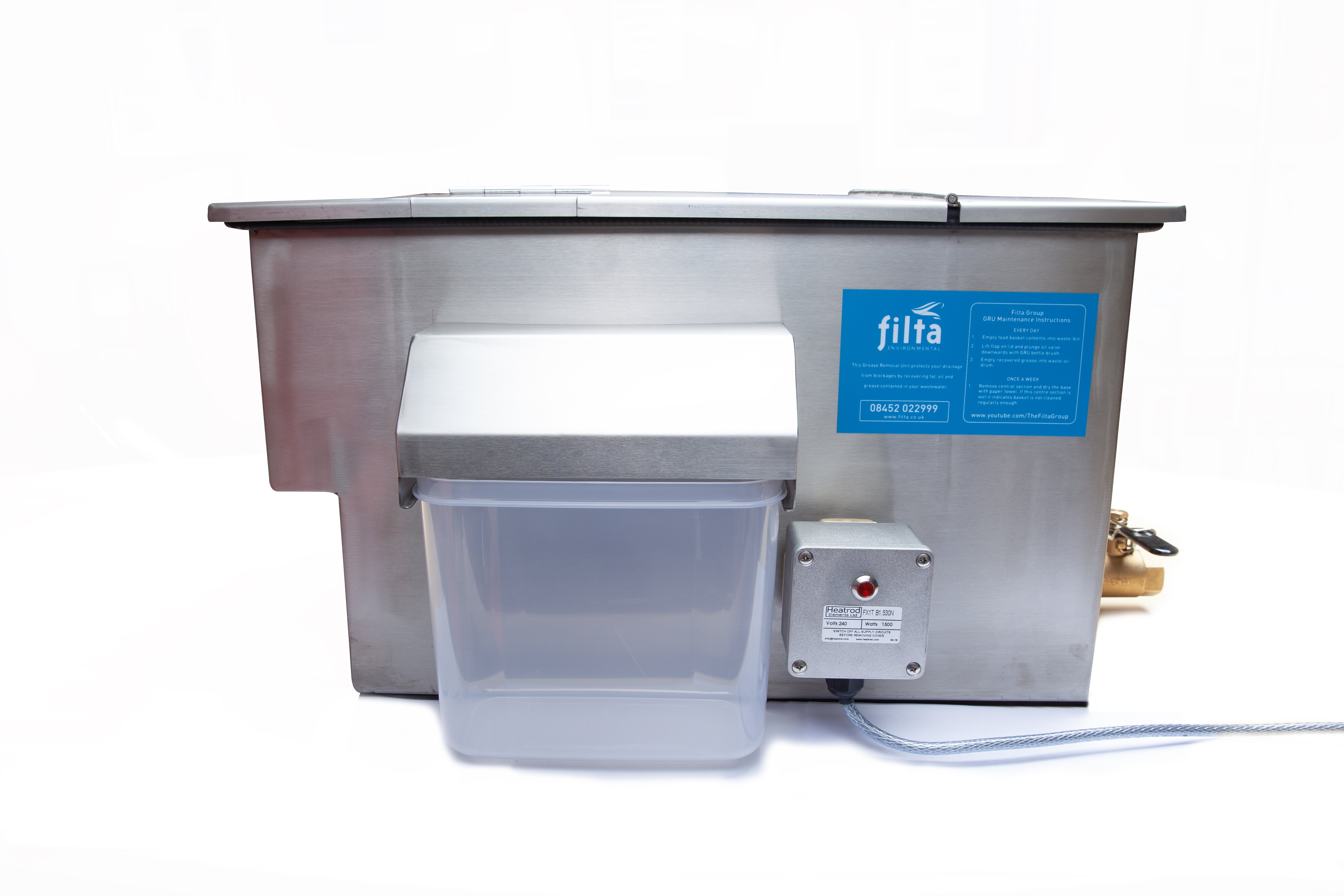
Options include fully automated, plumbed-in systems, a pushbutton pump station for fryers lacking filtration pumps and, where plumbing is unfeasible, wheeled caddies to roll under fryers. Filta Group installs and maintains grease management systems from many suppliers to match the needs of individual businesses along with the confusing regional differences in water company regulations to keep FOG out of drains and sewers. Its award-winning GreaseMaster grease recovery units separate and store food debris in a removable basket and force the FOG into an oil collection cassette, discharging clean water into the sewers. Operating under hydrostatic pressure – with no moving parts to break down – the under-sink GreaseMaster works with dishwashers, rotisserie ovens and combi-ovens.
CESA’s guide to FOG can be found at www.cesa.org.uk/media/g0vpx2mj/british-waterfog-code-of-practice-2015.pdf
Good digestion
Christo Tafelli installed Power Knot’s LFC-70 biodigester at his eighth-century St Albans pub, Ye Olde Fighting Cocks, to tackle the food waste that represented 20% of the pub’s overall waste removal costs. Tafelli estimates the biodigester – which has eliminated three weekly collections and a smelly 2,400-litre bin – will save him around £5,000 a year. Its touch-screen operating system shows that it digested 5,151kg of waste in the first four months, preventing 21.6 tonnes of CO2 emissions.
It uses agitation, self-replenishing microbes, enzymes housed in ‘Powerchips’, hot and cold water and oxygen to aerobically digest between 70kg-125kg of food waste per day into drain-safe ‘grey’ water.

Discount or donate
Smartphone apps are making it easy for caterers to divert surplus, in-date food and meals from landfill to people. Too Good To Go’s 1.7 million UK users order and collect heavily discounted unsold food from participating outlets towards the end of the day. Costa Coffee, which recently extended its pilot partnership with the app from nine to 100 UK stores, has shifted 10,355 meals this way since 2018, saving 25,000kg of CO2 emissions.
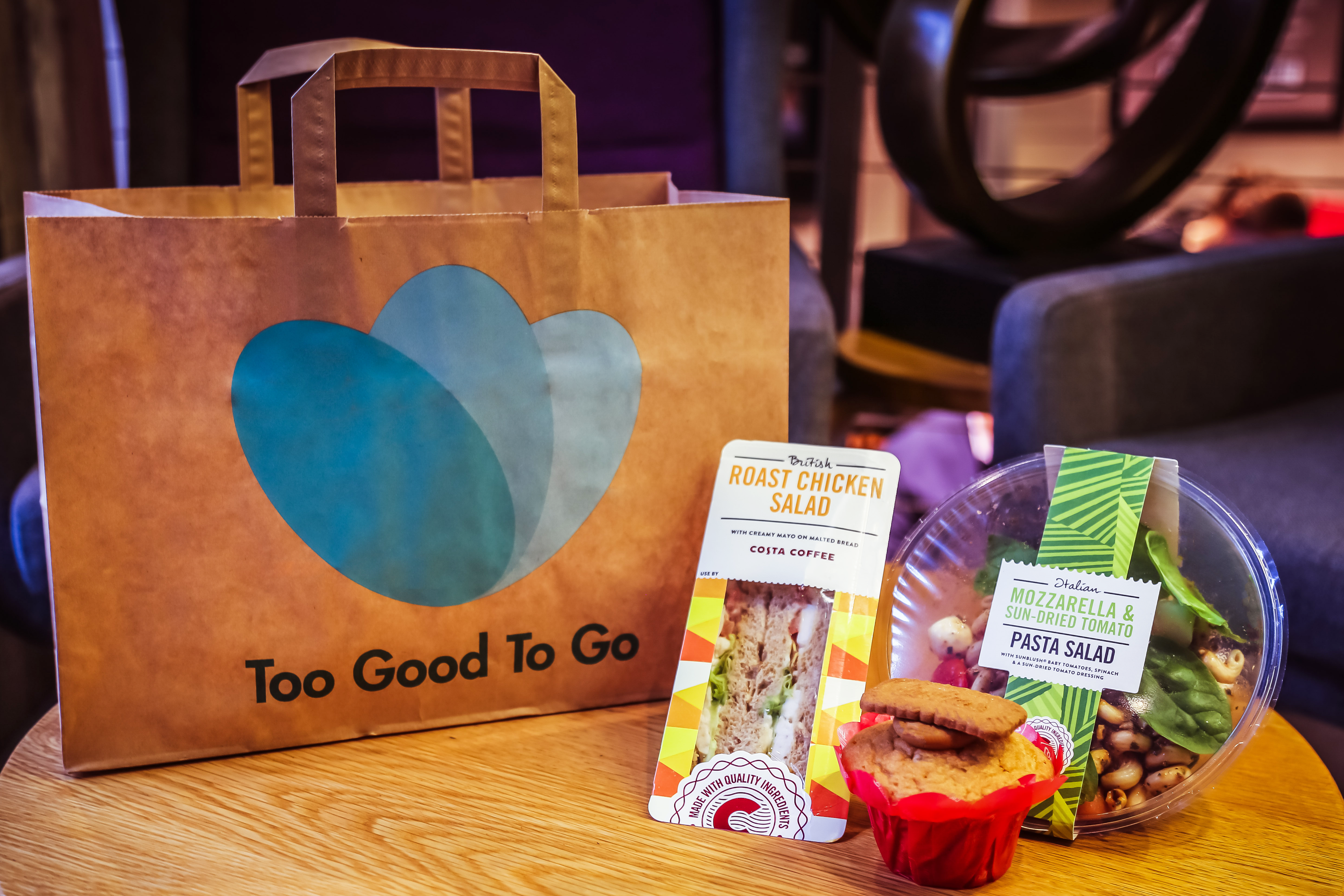
The Olio app helps operators distribute surplus food to the 8.4 million Brits that charity Fareshare says go hungry each year. Olio volunteers collect the food, post it to the app and co-ordinate its distribution.
Fooditude has donated 2,358 portions of food to people in need since last December, saving 472kg of food from landfill and nearly 2,030kgs of C02.
Suppliers
- Catering Equipment Suppliers Association www.cesa.org.uk
- Enterpack www.enterpack.co.uk
- Filta Environmental www.filta.co.uk
- Green Eco Technologies www.greenecotec.com
- IMC www.imco.co.uk
- Jestic Foodservice Equipment www.jestic.co.uk
- Mechline www.mechline.com/hygenikx-info
- Meiko www.meiko-uk.co.uk/en/
- Power Knot www.powerknot.com
- Tenzo www.gotenzo.com
- Winnow www.winnowsolutions.com




